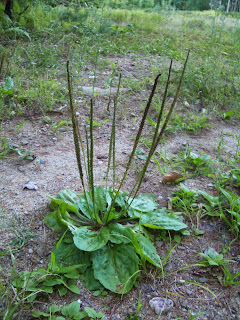 |
| Lavender Essential Oil Works for Almost Everything in a Pinch! |
Fortunately, the Co-op has plenty of natural solutions for these summertime woes on the Health & Beauty shelves, and you can even make some of your own easy, cheap, and effective remedies.
Repel Mosquitoes, Black Flies & Ticks
Essential oils may repel these nasty critters more safely and just as effectively as DEET. Citronella, lemon eucalyptus, lemongrass, rose geranium, catnip, and lavender essential oils are particularly helpful. The Co-op offers many products that contain these oils; look for a scent and consistency you like. Lavender and rose geranium appear best for repelling ticks, a big concern in my neck of the woods._________
DIY Bug Spray
This simple spray will need to be reapplied frequently. You can use one ounce of vegetable oil such as olive or grapeseed oil in place of the water/vodka mix as a base for something longer lasting, but this will probably be too thick to spray on.
- 1/2 ounce water
- 1/2 ounce vodka
- 30 drops of essential oils (choose from lavender, rose geranium, citronella, and/or lemon eucalyptus...)
_________
In a pinch, plain lavender essential oil will often work; I keep a bottle in my car and lavender wipes in my purse. Not only does it help repel bugs and ticks, but it also helps disinfect and ease the itch of a bug bite, poison ivy, and other unexpected rashes after the fact.
Also promising is a simple tincture extract of yarrow. To make a yarrow extract spray, chop of the fresh leaves and flowers, losely fill a jar, and cover it with vodka. Let it steep - shaking regularly - for about one month and then strain/squeeze it out through a cloth. Yarrow extract is much less heavily scented than the essential oils, which can be an advantage for some.
 |
| Yarrow Leaves |
 |
| Yarrow Flowers |
Don’t underestimate simple barrier methods: a lightweight, long-sleeve hoodie and long pants and/or clothing, hats, or shelter made of lightweight screen. This works VERY well for young children, adults with super-sensitive skin, and those for whom no amount of bug spray fends off our tiny villains. Mosquitoes can pierce through thin or tight clothing, so make sure to choose thicker material or baggier options if they are your current enemy.
For ticks, do a thorough tick check every night (and at least a quick one after coming indoors), even if you applied a repellant. Click here for more information on ticks.
Avoid Poison Ivy Rashes
If you’ve inadvertently landed in a patch of poison ivy (or oak or sumac), immediately rub your skin with freshly crushed jewelweed stems, leaves, and flowers – which usually grow nearby – then rinse with cold water (or jump into the lake or river). |
| Jewelweed in Bloom |
 |
| Young Jewelweed Sprouting |
You can also simmer whole jewelweed plants, strain, and freeze into ice cubes for on-the-spot itch relief. If your family is a magnet for poison ivy, keep a bag of these ice cubes in the freezer for easy access.
Or, you can use a poison ivy soap from the Co-op (we have a couple options), which helps pull urushiol off your skin and relieves itches. A cool bath or compress made with sweet fern (available in the wild as well as at the Co-op as Nature’s Poison Ivy Relief) will help to quell poison ivy rashes.
Nix the Itch, Be It a Bug Bite or Poison Ivy
 |
| Plantain is a Common Weed |
If you’re “in the field” and know some plant ID, the common plantain leaf can be chewed and applied as a paste to bug bites, poison ivy, and even spider bites to help draw out irritating compounds and infection and help soothe the skin. Infused oils and salves made with plantain, calendula, chickweed, grindelia, sweet fern, and/or jewelweed also work nicely. I keep a simple plantain salve on hand in summer, which stops poison ivy itches in minutes - though the freshly chewed herb is even better. (Except for grindelia, these plants grow wild or can be cultivated in New Hampshire.) Co-op customers really love the Nature's Poison Ivy Relief remedy, which is basically a tea of dried sweet fern (a common weed/shrub in yards and recently logged forests) that you make, store in the fridge, and apply as a compress as needed.
Apple cider vinegar can also provide immediate relief for poison ivy (as well as sunburns). Apply it directly to a small area first to see how it works for you. If you'd like, you can infuse healing herbs into the vinegar overnight or add a few drops of a soothing essential oil like lavender.
Learn More
Virtual Herb Walk - Identifying, Harvesting & Using Wild HerbsMake Your Own Herbal Oils, Salves & Creams
Kitchen Apothecary: Basic Herbal Recipes
The statements made on this blog have not been evaluated by the FDA and are not intended to diagnose, prescribe, recommend, or offer medical advice. Please see your health care practitioner for help regarding choices and to avoid herb-drug interactions.